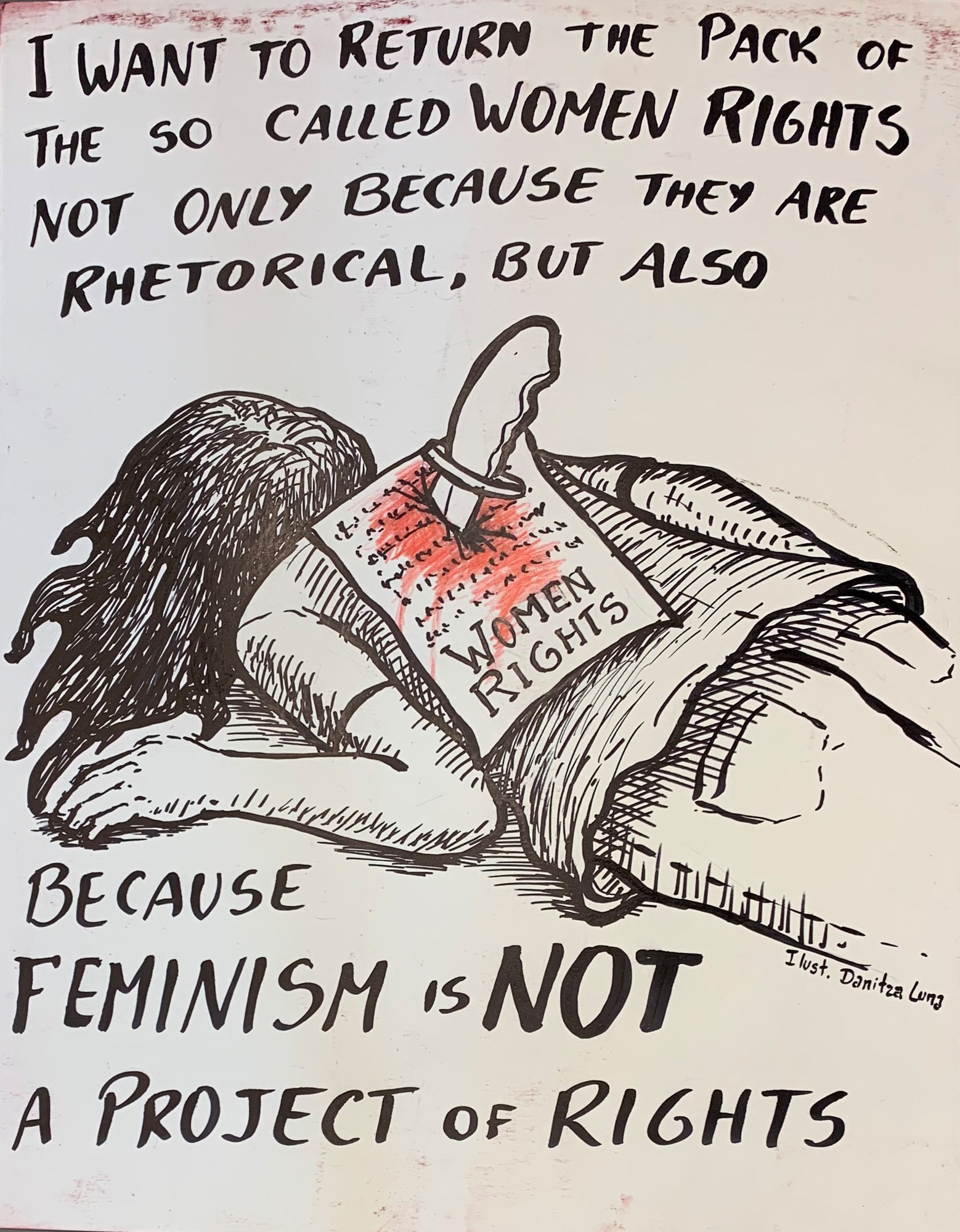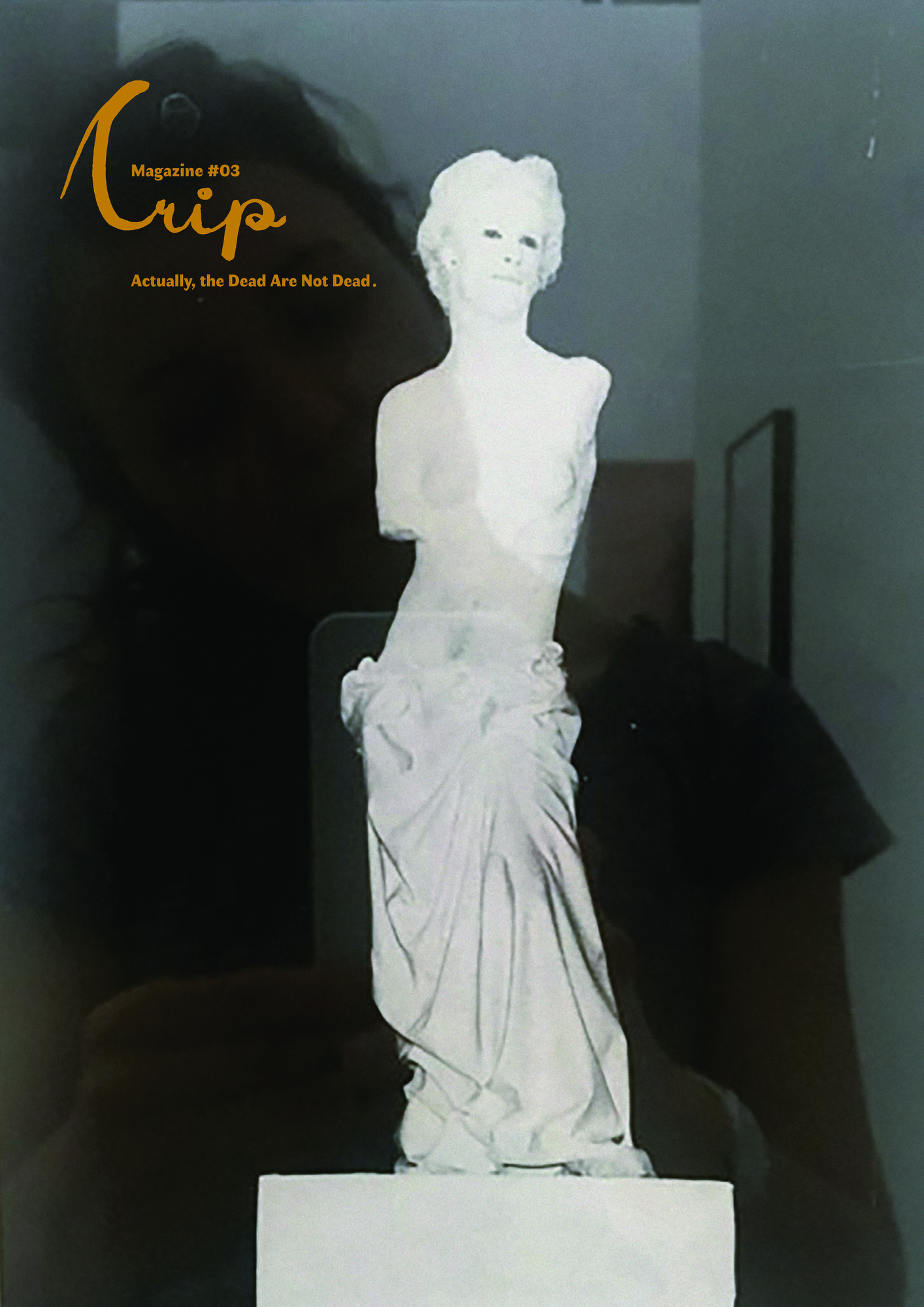Actually, The Dead Are Not Dead: Politics Of Life
29 Feb - 10 May 2020

Robert Gabris, aus der Serie Das blaue Herz, 2016, Kupferstich auf Papier, 70 × 50 cm,
Gedruckt in Stamperia d‘Arte Albicocco, Udine, Italien
Gedruckt in Stamperia d‘Arte Albicocco, Udine, Italien

María Galindo / Danitza Luna, La piel de la lucha, la piel de la historia (Die Haut des Kampfes, die Haut der Geschichte), 2019
Poster aus einer Performance; Zeichnungen Danitza Luna, produziert von dem Kollektiv Mujeres Creando
Poster aus einer Performance; Zeichnungen Danitza Luna, produziert von dem Kollektiv Mujeres Creando
ACTUALLY, THE DEAD ARE NOT DEAD: POLITICS OF LIFE
29 February – 10 May 2020
Curators
Hans D. Christ, Iris Dressler and Viktor Neumann
in cooperation with other members of the Bergen Assembly 2019 Core Group
Murat Deha Boduroglu, Banu Cennetoglu, María García, Hiwa K, Katia Krupennikova, Paul B. Preciado, Pedro G. Romero, Simon Sheikh, Emma Wolukau-Wanambwa
Artists
Bergen (Belgin Sarilimiser), Lisa Bufano, Antonio Centeno Ortiz /
Raúl de la Morena, Anna Dasovic, Eva Egermann, Valérie Favre, Flo 6x8, Robert Gabris, María Galindo / Danitza Luna, Sonsherée Giles, Niklas Goldbach, Siri Hermansen, Suntag Noh, PEROU / Sébastien Thiéry, Pedro G. Romero, María Salgado / Fran MM Cabeza de Vaca, Ilhan Sayin, Åsa Sonjasdotter, Sunaura Taylor et al.
From February 29 to May 10, 2020, the Württembergischer Kunstverein in Stuttgart presents Actually, the Dead Are Not Dead: Politics of Life, conceived as part of a year-round series of exhibitions in continuation of Bergen Assembly 2019. The artistic directors of this latest edition of the Norwegian Triennial were Hans D. Christ and Iris Dressler, directors of the Württembergischer Kunstverein. In the context of Bergen Assembly 2019, Christ and Dressler invited another ten curators to jointly explore the concept and notions of assembly. Sounding the question of how to identify allies within collective emancipatory processes, the group emphasized the relevance of the dead, or of those who are no longer or not yet alive. This aspect ultimately formed the conceptual point of departure for Bergen Assembly 2019, whose title refers to a quote by writer and filmmaker Alexander Kluge: “It is in fact a mistake to think that the dead are dead.“
In Bergen, the two-and-a-half-year curatorial process culminated in September 2019 in the form of a nine-week exhibition. This structure will be unraveled once again in Stuttgart. In the context of three consecutive, simultaneously autonomous and interrelated exhibitions, approaches and outcomes from Bergen will be picked up on, pursued, but also realigned. Several works circulate between each edition, thus appearing repeatedly in various contexts.
The first part of the Stuttgart exhibition series focuses on life - understood beyond the alleged binary oppositions of subject and object, human and animal, health and illness, life and death. The exhibition asks how our relationships with those who are no longer or not yet present can be redefined, acknowledging our responsibility for past and future life. This might include how we tackle the legacies of unresolved social conflicts, or our concern for the future of the planet and its resources. It involves the lives of functionally diverse bodies as well as the struggle against all those economies that condone death for the sake of profit.
These struggles require attributes beyond the heroic or triumphant. Much rather, they are based on emancipatory practices which understand that vulnerability and self-empowerment, sorrow and joy, the dead and the living must go together.
In addition to painting, graphic art, photography, and video, the exhibition includes documentations of dance, performance, and activist interventions, as well as presenting magazines and artist publications.
29 February – 10 May 2020
Curators
Hans D. Christ, Iris Dressler and Viktor Neumann
in cooperation with other members of the Bergen Assembly 2019 Core Group
Murat Deha Boduroglu, Banu Cennetoglu, María García, Hiwa K, Katia Krupennikova, Paul B. Preciado, Pedro G. Romero, Simon Sheikh, Emma Wolukau-Wanambwa
Artists
Bergen (Belgin Sarilimiser), Lisa Bufano, Antonio Centeno Ortiz /
Raúl de la Morena, Anna Dasovic, Eva Egermann, Valérie Favre, Flo 6x8, Robert Gabris, María Galindo / Danitza Luna, Sonsherée Giles, Niklas Goldbach, Siri Hermansen, Suntag Noh, PEROU / Sébastien Thiéry, Pedro G. Romero, María Salgado / Fran MM Cabeza de Vaca, Ilhan Sayin, Åsa Sonjasdotter, Sunaura Taylor et al.
From February 29 to May 10, 2020, the Württembergischer Kunstverein in Stuttgart presents Actually, the Dead Are Not Dead: Politics of Life, conceived as part of a year-round series of exhibitions in continuation of Bergen Assembly 2019. The artistic directors of this latest edition of the Norwegian Triennial were Hans D. Christ and Iris Dressler, directors of the Württembergischer Kunstverein. In the context of Bergen Assembly 2019, Christ and Dressler invited another ten curators to jointly explore the concept and notions of assembly. Sounding the question of how to identify allies within collective emancipatory processes, the group emphasized the relevance of the dead, or of those who are no longer or not yet alive. This aspect ultimately formed the conceptual point of departure for Bergen Assembly 2019, whose title refers to a quote by writer and filmmaker Alexander Kluge: “It is in fact a mistake to think that the dead are dead.“
In Bergen, the two-and-a-half-year curatorial process culminated in September 2019 in the form of a nine-week exhibition. This structure will be unraveled once again in Stuttgart. In the context of three consecutive, simultaneously autonomous and interrelated exhibitions, approaches and outcomes from Bergen will be picked up on, pursued, but also realigned. Several works circulate between each edition, thus appearing repeatedly in various contexts.
The first part of the Stuttgart exhibition series focuses on life - understood beyond the alleged binary oppositions of subject and object, human and animal, health and illness, life and death. The exhibition asks how our relationships with those who are no longer or not yet present can be redefined, acknowledging our responsibility for past and future life. This might include how we tackle the legacies of unresolved social conflicts, or our concern for the future of the planet and its resources. It involves the lives of functionally diverse bodies as well as the struggle against all those economies that condone death for the sake of profit.
These struggles require attributes beyond the heroic or triumphant. Much rather, they are based on emancipatory practices which understand that vulnerability and self-empowerment, sorrow and joy, the dead and the living must go together.
In addition to painting, graphic art, photography, and video, the exhibition includes documentations of dance, performance, and activist interventions, as well as presenting magazines and artist publications.



